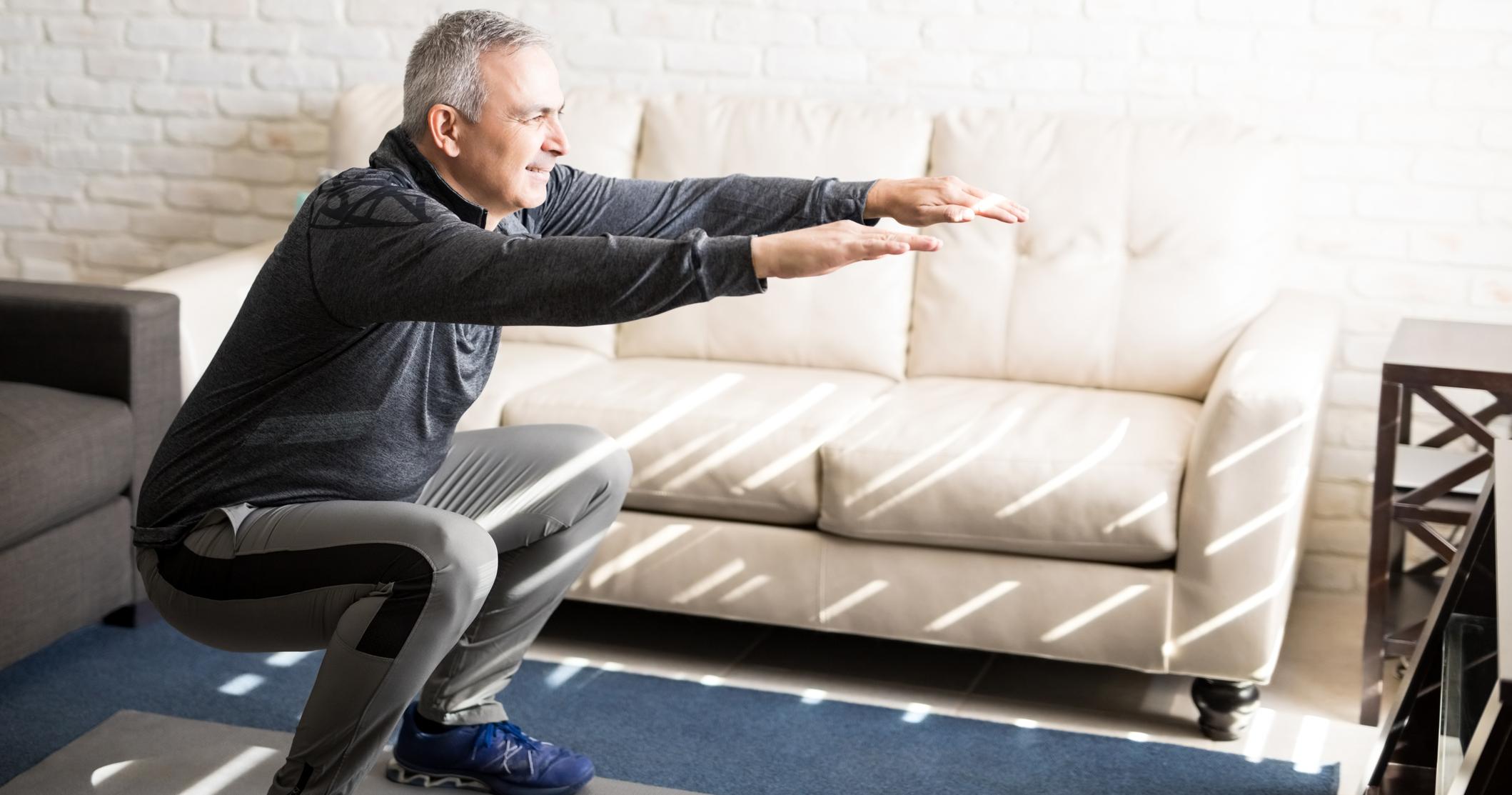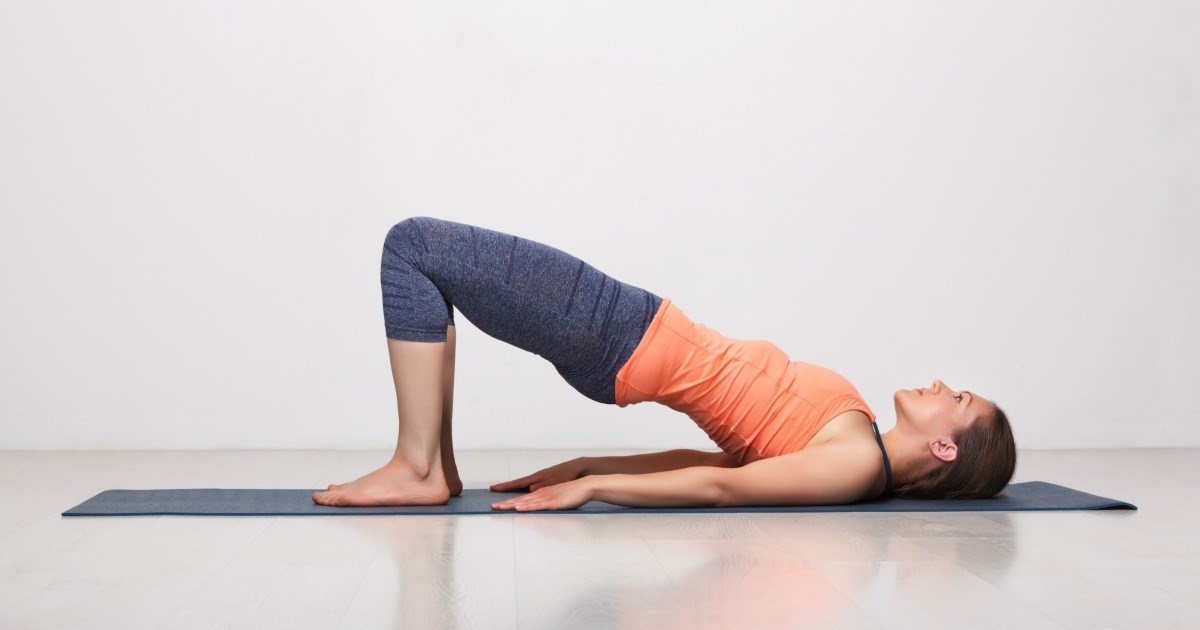Exercises To Fix An Anterior Pelvic Tilt
Anterior pelvic tilt is a posture issue many individuals can have without even being aware of it. This condition occurs when the back and quadriceps are too tight and the abdominal and gluteus muscles are too loose. The result is the pelvis tips forward, causing a swaybacked posture where the belly and rear stick out. Anterior pelvic tilt is more than just an aesthetic issue. It puts a lot of pressure on the lower spine, so individuals are likely to get back aches from standing for too long. Solving anterior pelvic tilt mostly focuses on strengthening the overly loose muscles while stretching out the too tight ones. Get to know the best exercises to fix an anterior pelvic tilt now.
Quadriceps Stretch On The Knees

A quadriceps stretch on the knees is mostly designed to deal with the issue of overly tight quadriceps. The quadriceps are a group of muscles that run along the top of the thighs. They are contracted when individuals are seated, so the modern lifestyle of a lot of sedentary activities leads to quadriceps constantly bunched up too tight. This leads to posture problems because the quadriceps pull down on the top of the pelvis, tipping it farther forward. A good way of stretching out quadriceps is with a kneeling stretch. Start by kneeling on the ground in an upright position. Bring one leg forward so it is bent at a ninety-degree angle with the foot flat on the ground. Lean gently forward by bending the front leg while keeping the back calf flat on the ground and tucking the pelvis in. Hold for about thirty seconds to get the best benefit, then switch to the other side. Individuals can feel this stretch deep throughout their quadriceps.
Unveil more exercises for fixing an anterior pelvic tilt now.
Squats In Proper Form

A squat is one of the key exercises for building up the gluteus muscle. These muscles along the buttocks and upper backs of the thighs help pull the pelvis slightly downward, so they keep it from tipping forward as much. However, if individuals do squats incorrectly, they can end up seriously hurting their joints. Therefore, it is important to learn how to do squats in the proper form. Individuals must start by standing with their feet about a hips width apart. While keeping their torso relatively straight, individuals must gently bend their legs like they are sitting down. They should try to get their thighs roughly parallel to the ground without allowing their calves to lean so far forward that their knees go in front of their toes. Individuals should pause for a moment like this, and then contract the buttock muscles as they push back into a standing position. Throughout the exercise, it's important to be sure to keep the heels flat on the floor and tuck the pelvis slightly inward instead of letting their hips push back.
Learn more anterior pelvic tilt exercises now.
Extended Time For Planks

A plank is an incredibly simple exercise that does not involve any special equipment or lengthy aerobic poses. All individuals have to do is find a flat area of the floor and position themselves on their hands and knees. They then stretch their legs straight back and bend their arms until their weight is on their forearms. Their entire body should be a long, straight line with their hips at the same height as their shoulders. Gently squeezing their abdominal and buttock muscles will help hold the plank position. The typical recommendation for someone trying to get fit is to hold planks for around thirty seconds. However, if an individual suffers from anterior pelvic tilt, extended time for planks is necessary. They should aim for at least a minute, and hold the plank a little while longer if they can. Planks are an ideal exercise for individuals dealing with anterior pelvic tilt because they simultaneously work the abdominal muscles and gluteus muscles while forcing individuals to hold their pelvis in the correct posture.
Get the details on the next exercise that helps fix anterior pelvic tilt now.
Bridge Exercise

The bridge exercise is about disengaging the hip flexors. Though its main benefit is stretching the hip region, it also provides some strengthening to the glutes and abs. Individuals start a bridge by lying flat on their back with their knees in the air, feet on the floor, and arms stretched out flat on the floor and pointing towards their feet. Then they gently squeeze their buttocks to raise their rear off the ground and create a straight line with their body between the shoulders and knees. Their weight should be resting primarily on their shoulders and feet, with their arms acting as a stabilizing force. Individuals should hold this pose for a few seconds and then slowly lower back to the ground. Individuals should start by doing this at least twelve times, and then take a break. Ideally, they should do three sets of twelve for maximum effect.
Uncover more exercises to fix anterior pelvic tilt.
Posterior Tilt Exercise

The posterior tilt exercise essentially pushes the pelvis in the opposite direction, so it helps correct a pelvis tilted too far forward. This exercise starts with individuals lying on their back with their feet a few inches away from their rear and their knees in the air. While keeping their back flat on the ground, individuals must squeeze their buttocks together as they tilt their hips upwards. They should feel like their spine is flattening and their hips are curling inward, and must hold it for a few seconds as they contract their buttock and abdominal muscles. Individuals must then return to their original position and repeat this process at least ten times. This useful exercise does a few different things to aid with anterior pelvic tilt. It exercises and activates the weak muscles letting the pelvis shift out of alignment, and it also stretches out the back and the thick muscles pulling too tightly on the pelvis.